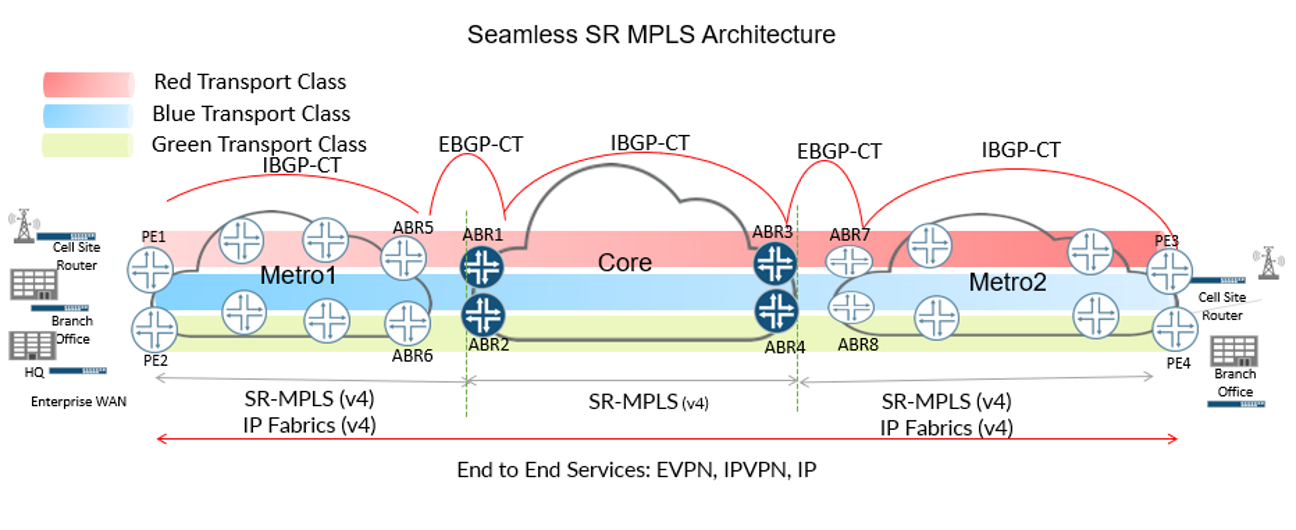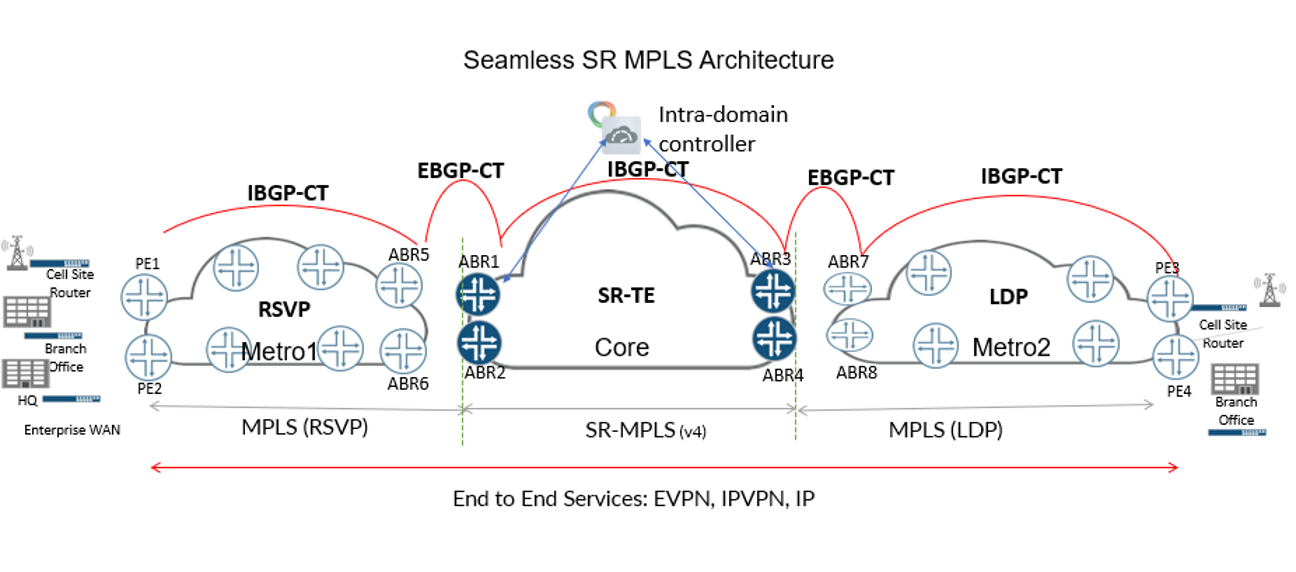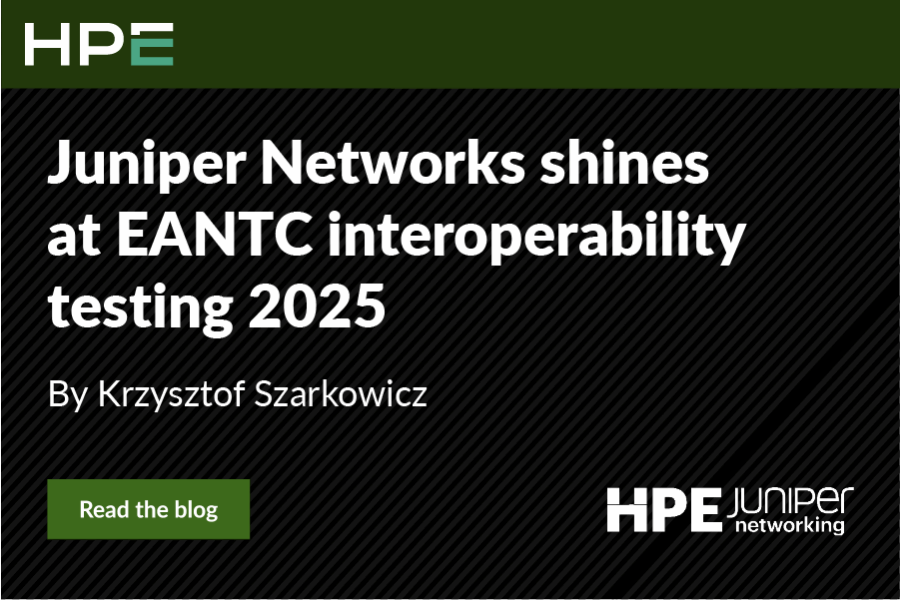5G technology will enable people, IoT devices, businesses and industries to connect at an unprecedented scale with improved efficiency. To fully realize the benefits of 5G technology, transport networks will need to be capable of handling massive bandwidth, scale, provide lower latency paths and ultimately, deliver greater resiliency than today’s 3G/4G networks.
Segment Routing (SR) provides an immediate solution, as it simplifies network operations, provides greater flexibility and agility for path management and traffic engineering and enables network operators to more efficiently deliver the latency and resiliency required to support a 5G network. However, SR has primarily been deployed within domains, which limits its ability to provide traffic engineering and path management end-to-end across the network. In this blog, we will introduce a method for providing seamless, end-to-end connectivity between SR domains. We call this method Seamless Segment Routing or Seamless SR. With Seamless SR, network operators will be able to deliver a more scalable, agile and efficient network, which delivers greater resiliency and lower latency paths.
Seamless SR is based on Seamless MPLS — a widely deployed mechanism that provides end-to-end connectivity across domains in 3G/4G networks. The Seamless MPLS architecture isolates the service layer from the transport layer and provides a flexible, scalable and reliable packet transport. The Seamless MPLS architecture is applicable in SR-MPLS networks. Autonomous System Border Routers (ASBRs) advertise SR-labeled prefixes across domain boundaries using BGP-LU. BGP Prefix-SID provides interdomain connectivity using predictable labels. It adds SID and SRGB information to these advertisements using additional BGP extensions.
BGP-LU and BGP-Prefix SID provide end-to-end best effort paths. As mentioned above, 5G networks have very stringent SLA requirements, which require end-to-end TE paths. To satisfy these requirements, a Seamless SR architecture proposes extensions to the Seamless MPLS architecture. In Seamless SR, the PE residing in one domain builds multiple paths to the ASBR. The ASBR advertises these paths to another PE residing in another domain. This gives multiple paths from one PE to the other PE satisfying different SLAs (e.g low-latency, high-bandwidth). Seamless SR architecture provides means to create end-to-end Traffic Engineered paths irrespective of what technology is deployed within the domains. It incorporates SR and SR-TE as well as RSVP and LDP. Brown field deployments that have RSVP and LDP-based Seamless MPLS networks can easily migrate to Seamless SR as it provides a very flexible interdomain connectivity.
Introduction to BGP Classful Transport

The end-to-end strict SLA paths in a multi-domain network can be achieved by extending BGP to carry multiple paths to the remote loopback. IETF draft on BGP Classful Transport Planes defines BGP-Classful Transport. This is a new Network Layer Reachability Information (NLRI) and consists of prefix and route distinguisher. Route Distinguisher (RD) is required to advertise multiple NLRIs for the same prefix. The new extension carries a Route Target (RT). Route Target corresponds to the color of the end-to-end path. The service prefixes carry the extended color community which maps to the RT carried by the BGP-CT. This provides automatic steering of the traffic into the transport tunnels.
Networks that are based on Seamless MPLS architecture and use BGP-LU to provide end-to-end connectivity can easily migrate to a Seamless SR architecture with BGP-CT. The first step in migration will involve enabling new family named “inet transport” on the BGP-LU sessions. On the border nodes, transport classes which indicate the different SLA paths should be configured. The intradomain transport tunnels like RSVP-TE and SR-TE must be associated with the transport class. That’s all the configuration needed for BGP-CT. We can now get different paths to the same remote loopback placed in different inet.3 RIBS, for example, red.inet.3 and blue.inet.3 for the red and blue transport class.
One of the major advantages of BGP-CT is that it is completely distributed. Services and the transport layers are truly decoupled from each other. Network boundaries and hierarchy can be used by operators as tools for scalability and manageability. Network boundaries do not affect the service layer. For example, when a L2VPN is provisioned on two service endpoints, it doesn’t matter whether it takes two hops or twenty hops, nor how many network boundaries it needs to cross. A packet going from an access node to a remote service endpoint can be sent on the path using a single transport label.

In the Seamless SR MPLS architecture, bandwidth management within each domain is done independently through an intradomain traffic engineering controller for SR-TE. RSVP-TE could also be used as an intradomain tunneling technology during migrations. Seamless SR provides interconnectivity for domains that use different technologies. Fine grained end-to-end bandwidth management is not an integral part of the Seamless SR architecture. However, the existing tools that network operators use for end-to-end bandwidth management in Seamless MPLS networks will continue to be useful.
Conclusion:
Large networks that are continuously evolving benefit from the Seamless SR architecture as Seamless SR is a true scale-out architecture and can effectively solve scale concerns that may arise in the future as the network grows. Seamless MPLS deployments that interconnect different domains using BGP-LU continue to work when the domains independently migrate to SR-MPLS. BGP-CT extensions provide end-to-end SLA paths and provide an easy migration from BGP-LU-based deployments.

























